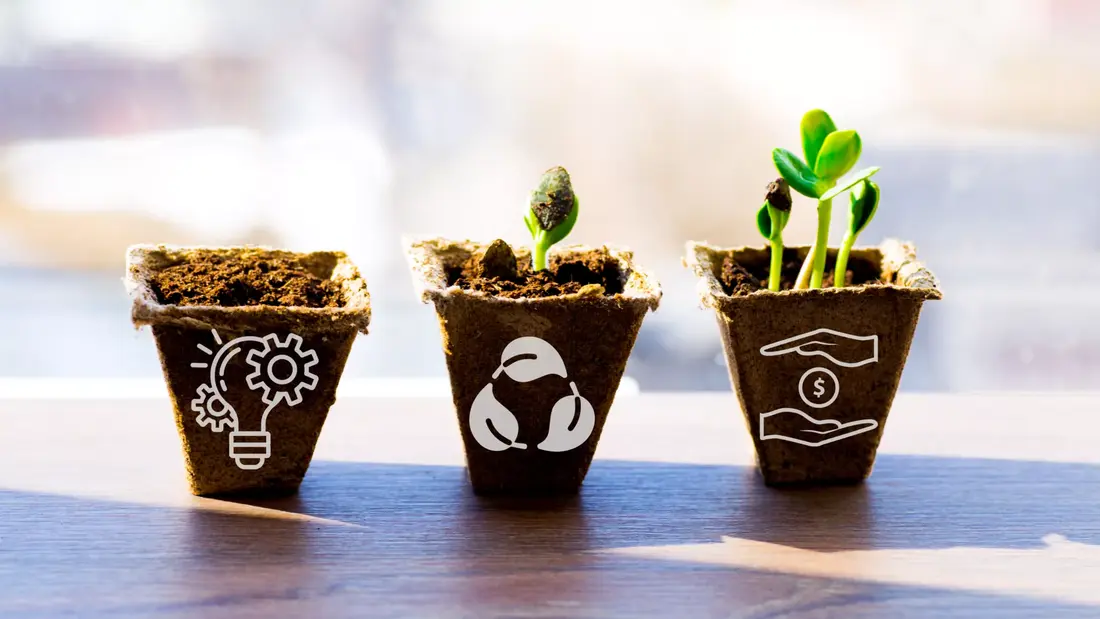As technology advances, concerns about its impact on the environment are growing. E-waste is a new problem caused by the rapid growth of electronic devices, gadgets, and digital tools. E-waste is one of the fastest-growing waste streams in the world, and much of it ends up in landfills, where harmful substances leak into soil and water. To address this growing challenge, scientists, engineers, and designers are investigating sustainable alternatives. Biodegradable engineering materials are a promising solution that could help shape the future of eco-friendly and sustainable design practices.
Understanding the Environmental Impact of Conventional Tech Materials:
Most modern devices are made of plastics, metals, chemicals, and non-degradable components. These materials are strong and durable, but they take hundreds of years to degrade, and many of them produce hazardous chemicals in the process. Throwing away smartphones, laptops, cables, and other devices can therefore be harmful to the environment in the long term. Researchers are studying materials that can perform the same functions but that break down safely and gradually without leaving harmful traces.
The Growth of Green Technology Options:
Biodegradable technology materials are made from naturally occurring organic chemicals or molecules that can be broken down by biological processes. People are starting to pay more attention to materials such as starch plastics, mushroom-based packaging, cellulose, and biodegradable polymers because they can be used in technology and are good for the environment when they are no longer needed. These materials break down over time when they come into contact with bacteria, moisture, and air. This makes them ideal for preventing long-term waste accumulation.
Applications of Biodegradable Materials in Consumer Electronics:
People throw away a lot of consumer electronics. Thanks to new biodegradable materials, companies are starting to make phone cases, printed circuit boards, packaging, and even hard parts that break down on their own. For example, some entrepreneurs and research labs have developed biodegradable printed circuit boards (PCBs) using natural fibers and polymers. These boards perform well and break down in composting systems. Even parts for headphones, USB cases, and laptop sleeves are being made from biodegradable materials to reduce the amount of waste that ends up in landfills.
Applications of Natural Fibers and Plant-Based Polymers:
Tech companies are starting to use natural fibers like hemp, flax, and jute because they are strong, flexible, and easily compostable. When these fibers are mixed with biodegradable polymers, they can be made into strong, environmentally friendly parts. 3D-printed tech accessories and packaging are also being made from plant-based polymers like polylactic acid (PLA), which is derived from cornstarch or sugarcane. In an industrial composting environment, these materials break down into safe components within months. This makes them ideal for tech products that are only used once or twice.
Design Innovation and Aesthetic Appeal in Sustainable Tech:
Biodegradable engineering materials are not only practical but also offer unique design and aesthetic possibilities. Natural materials often have organic textures, earthy colors, and a simple appearance, which appeals to modern consumers who strive for simplicity and environmental protection. Designers are experimenting with materials such as mycelium (fungus roots), algae polymers, and recycled food waste to create electronic products that are beautiful and environmentally friendly. These designs often spark debate and make people think about the impact of their purchases on the environment.
Challenges in Implementing Biodegradable Materials in Tech:
Despite the bright prospects of biodegradable materials, there are still issues that need to be resolved before they can be fully applied to the mass production of electronic products. Many biodegradable materials do not last long enough or are not heat-resistant enough to be used in high-end electronics. Some biodegradable materials require industrial composting facilities to be effectively degraded, but there are also concerns about the difficulty of these facilities. Additionally, biodegradable materials are more expensive to produce than conventional plastics and metals, making them difficult to use on a large scale. However, these issues are slowly being addressed through continued research and growing demand.
How Consumers Drive Adoption of Biodegradable Technology:
Consumer behavior is key to the adoption of biodegradable tech materials. As people become more aware of environmental issues, more and more people are choosing products that align with their personal beliefs. People are no longer focused solely on the performance and price of a product. They also want to know how it’s made, what materials are used, and what happens to it when it’s thrown away. People can change market trends and force manufacturers to take more responsibility by buying products from brands that focus on biodegradability and sustainable design. Reviews, word of mouth, and social media can also help make stronger environmental decisions.
Future Possibilities and Continued Research in Biodegradable Tech:
Biodegradable technology is relatively new, but there is still a lot of room for growth. Scientists are working on new technologies, including batteries that break down naturally, sensors made from silk proteins, and circuit parts that dissolve in water. More research is being done to improve the strength and usability of biodegradable materials so they can be used in more complex and durable devices. As materials science advances, we may see a time when smartphones, wearables, and home appliances can completely break down and still retain their functionality.
Integrate Biodegradable Materials into a Circular Economy Model:
Biodegradable engineering materials also fit into the concept of a circular economy, where products are made to be reused, recycled, or safely returned to the environment. Biodegradable materials can help products last longer than the usual “make, use, throw away” cycle. When designing devices, you can consider how easy they are to disassemble. This makes it easier to separate the components and compost them. Biodegradable materials can have a significant impact on the environment when used as part of a larger sustainable system. They can also contribute to a healthy environment in the long term.
Conclusion:
Biodegradable engineering materials are an important step towards a more responsible, sustainable future for design and technology. While there are still challenges to be solved, the progress being made is both inspiring and essential. The tech industry can reduce its environmental impact and set new standards for innovation by using materials that can safely return to nature after disposal. As consumers, designers, academics, and governments work together to support biodegradable solutions, the ideal of a cleaner, greener, technology-driven future is becoming a reality. It’s not just about the devices we use today but also about the legacy we leave for the next generation.
FAQs:
1. What do biodegradable engineering materials look like?
Biodegradable engineering materials are made from natural or organic chemicals that break down safely in the environment through biological processes after use.
2. Why should engineering products be made from biodegradable materials?
They help reduce e-waste, pollution, and the use of traditional plastics and metals that spend hundreds of years in landfills.
3. Are biodegradable engineering materials as strong as regular materials?
Many biodegradable materials are strong enough for packaging, accessories, and some hardware components, but they are not suitable for all engineering applications.
4. Can you compost electronics that break down naturally at home?
Some items can be composted at home, but most must be composted in a composting facility to fully decompose. Check the label or manufacturer’s instructions.
5. Are there many biodegradable engineering devices on the market?
They are becoming more common, especially in packaging and accessories. However, due to increasing research and growing demand, they are not yet widely available.




